Craft beer and craft cocktails have become a well-established trend in the bar industry. Over the last decade or two, craft beers have comprised a considerably larger percentage of beer consumption, significantly eating into the market share of products such as Budweiser and Coors. Similarly, the rise in popularity of craft cocktails has changed the way many bars approach designing their drink menu.
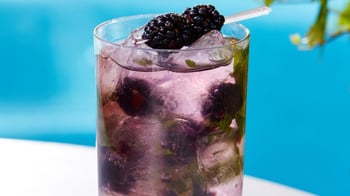 It can be difficult to arrive at a consensus definition for “craft drinks.” The term essentially refers to hand-made, high quality drinks. In many ways, there is more artistry associated with making these craft beers and cocktails than is typically found in more traditional drinks.
It can be difficult to arrive at a consensus definition for “craft drinks.” The term essentially refers to hand-made, high quality drinks. In many ways, there is more artistry associated with making these craft beers and cocktails than is typically found in more traditional drinks.
Regardless of the definition that ultimately gets agreed upon, it’s clear that the craft trend is here to stay. When determining the extent to which your bar will feature craft beers and cocktails, it’s important to understand the ways in which these drinks will impact your operations.
Impact of Craft Trend on Beer Service
Bar-i’s home state of Colorado is also home to Coors, one of the largest beer manufacturers in the country. However, this gigantic beer corporation is no longer king in Colorado. There are also more than 350 breweries in the state, giving Colorado one of the largest craft beer industries in the country.
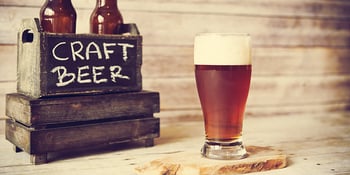 Due to the increase in popularity of craft beers, it’s common to see bars with more taps than ever before. It used to be common for bars to have about 6 taps, but now 10 taps would be considered the low end of average and many bars have 20 or more taps.
Due to the increase in popularity of craft beers, it’s common to see bars with more taps than ever before. It used to be common for bars to have about 6 taps, but now 10 taps would be considered the low end of average and many bars have 20 or more taps.
In addition, there are a growing number of bars that have made craft beers the primary focus of their business model. For example, Kline’s Beer Hall (a Bar-i client in Arvada, Colorado) carries craft beers almost exclusively. They have 56 rotating taps of craft beers from around the world. They also offer a small selection of wine and whiskey, but no other alcohol products. This dedication to the craft beer clientele has been a very successful business model for them, and many other establishments have experienced similar results after choosing to cater to this market.
Impact of Craft Trend on Cocktail Service
For a long time, two-ingredient cocktails such as Jack and Coke or gin and tonic were the standard, but the rise in popularity of craft cocktails is starting to change this trend. More and more bars are offering an extensive craft cocktail menu consisting of drinks made from 4 or more ingredients. These drinks allow bars to demonstrate a creative flair and distinguish themselves from their competitors.
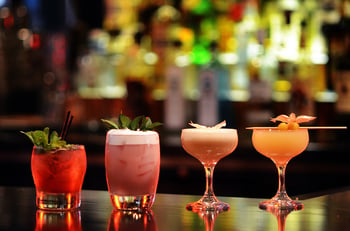 Craft cocktails provide bars with a greater opportunity to charge higher prices for their drinks. Two-ingredient drinks using a well liquor often cost $4 or $5, whereas bars can charge anywhere between $8 and $14 dollars for craft cocktails. In some very high end establishments, craft cocktails can be even more expensive.
Craft cocktails provide bars with a greater opportunity to charge higher prices for their drinks. Two-ingredient drinks using a well liquor often cost $4 or $5, whereas bars can charge anywhere between $8 and $14 dollars for craft cocktails. In some very high end establishments, craft cocktails can be even more expensive.
Several bars in the Denver area have flourished in recent years after deciding to make craft cocktails the primary focus of their business model. Establishments such as Avanti Food and Beverage, Sushi Den and Union Lodge have a large portion of their alcohol sales coming from craft cocktails, and they are all very successful bars with a high sales volume.
Benefits Associated with the Craft Trend
The rise in popularity of craft beers and craft cocktails has provided several important benefits to the bar industry:
- Greater focus on quality – Drinking a carefully crafted hoppy beer or a signature cocktail containing fresh juices and other unique ingredients provides a better experience for many bar patrons than the mass produced beers and standard two-ingredient drinks they can make at home.
 Increased cost per serving – While serving delicious food is often how you get people into your restaurant, alcohol sales are typically what drive profits. Therefore, anything that can help increase the size of your alcohol tabs is great for business.
Increased cost per serving – While serving delicious food is often how you get people into your restaurant, alcohol sales are typically what drive profits. Therefore, anything that can help increase the size of your alcohol tabs is great for business.
When the cost per serving of a drink is higher, it becomes much easier for your drinks to significantly drive up tabs. Someone drinking 2 craft cocktails after work can easily spend $20-$30, which is much more money than you’ll receive for standard drinks. While the difference in cost per serving is less dramatic with beer sales, craft beers will increase the price of your customers’ checks compared with traditional domestic beers such as Budweiser or Coors.- Elevates the perception of your bar – When craft cocktails are done correctly, you can create an environment where your bartenders are more than someone who simply pours drinks. Instead, they can become mixologists who understand how to creatively pair ingredients to make an exceptionally tasting drink in the same way that a skilled chef can creatively pair ingredients to prepare an exceptional food dish.
Challenges Associated with the Craft Trend
While the craft trend has certainly created positive change in the bar industry, it has also presented some challenges to bar owners:
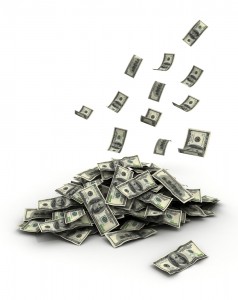 Increased costs – The typical cost per serving at sports bars and other establishments that don’t focus on craft beers and cocktails is approximately 75 cents. Bars that focus on craft beers and craft cocktails often have a cost per serving closer to $2, largely due to the fact that craft products use higher quality ingredients. Therefore, your costs for liquor products are more than double when you serve craft drinks, making it more important than ever to have the correct amount of inventory on-hand for these high-end products.
Increased costs – The typical cost per serving at sports bars and other establishments that don’t focus on craft beers and cocktails is approximately 75 cents. Bars that focus on craft beers and craft cocktails often have a cost per serving closer to $2, largely due to the fact that craft products use higher quality ingredients. Therefore, your costs for liquor products are more than double when you serve craft drinks, making it more important than ever to have the correct amount of inventory on-hand for these high-end products.- Increased complexity – Many craft cocktails have 4 or more ingredients, compared with 2 ingredients (liquor plus a mixer) for many standard drinks.
- Increased prep time – Your bartenders will have a longer prep time at the start of the shift due to the need to cut fruit, make garnishes and prepare other items used for craft cocktails. However, drink prep time is also impacted. It can often take a bartender several minutes to prepare some of these specialty drinks, which is a much longer time than is spent making a standard two-ingredient drink.
This increased prep time isn’t always conducive to providing a great customer experience during busy times when there are a large number of people standing by the bar waiting to order.  Non-standardized sizes – Traditional two-ingredient drinks typically come in a 1.5 ounce pour size, and most standard beers come in a 14.5 ounce pour size (this leaves a little room for head on a pint of beer). However, signature drinks will use smaller amounts of certain products in order to add complexity to the drink, creating a much wider range of pour sizes.
Non-standardized sizes – Traditional two-ingredient drinks typically come in a 1.5 ounce pour size, and most standard beers come in a 14.5 ounce pour size (this leaves a little room for head on a pint of beer). However, signature drinks will use smaller amounts of certain products in order to add complexity to the drink, creating a much wider range of pour sizes.
Similarly, craft beers often come in a wider range of pour sizes. It’s common to see smaller 8-ounce or 10-ounce pours for high alcohol content beers and 14.5-ounce pours for a pint of a lower alcohol content beer.- Varying keg sizes – Before the craft beer explosion, most beers came in full sized kegs. However, many craft beers come in quarter kegs or sixtel kegs. This variation in keg sizes makes storing kegs and performing inventory on kegs more complicated.
- Faster rotation of products – Many bars will have seasonal cocktail menus that rotate 2-4 times a year. Similarly, bars that serve craft beers will often have about half of their taps stay the same all the time while the other half rotates frequently (sometimes weekly or monthly).
Keep in mind that while rotating beers quickly can be attractive to your customers, it can also negatively impact your keg yield and profitability if you rotate them too often. - Increased retail losses – If you forget to ring in a well drink or a cheaper beer such as Budweiser, you’re losing approximately $4 in retail sales. However, since craft beers often cost around $7 and craft cocktails can cost $10 or more, forgetting to ring in a single drink is much more costly to your bottom line.
Ways to Mitigate the Challenges Associated with Craft Drinks
There are several things you can do to minimize the impact of these challenges on your bar’s operations:
- Batching – You can pre-mix certain elements of a craft cocktail in order to save time preparing these drinks once they’re ordered. Batching cocktails doesn’t look as fancy when your bartender prepares them, but it allows you to be more efficient when making popular craft drinks.
Some bars will use batched cocktails for tableside service since the customer doesn’t see the drink prepared, but will make the drink from scratch for bar customers since part of the craft cocktail experience involves watching a bartender creatively mix all of the ingredients together. Ultimately, you’ll need to figure out the right balance between efficiency and artistry that will provide your customers with the best possible experience. 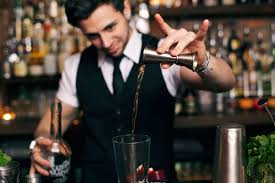 Jiggers – It’s easy to use a count when pouring traditional two-ingredient drinks, but when you have 4 or more ingredients and several of them are used in small quantities, your bartenders will need to use jiggers in order to ensure drinks are made properly.
Jiggers – It’s easy to use a count when pouring traditional two-ingredient drinks, but when you have 4 or more ingredients and several of them are used in small quantities, your bartenders will need to use jiggers in order to ensure drinks are made properly.
There will be a slightly longer prep time when jiggers are used, but it’s important to get the proportions of each ingredient right to ensure that these drinks taste consistently great.- Training/cheat sheets – It takes a lot more training to ensure your entire bar staff knows how to make your craft cocktails quickly and correctly. While this training can be time-consuming, it will pay huge dividends when your bartenders can confidently make every drink on the menu the way your customers expect them to taste.
You may also want to consider putting “cheat sheets” behind the bar which list the recipes for all of your craft cocktails. This will make it easy for bartenders to reference the recipe of a drink that isn’t made very often. - Pricing decisions become a regular task – When your menu is static, you can essentially set your prices once and forget about this task moving forward. However, pricing decisions must be made much more regularly when you rotate the items on your menu.
Every time you create a new drink for your menu or add a new beer, you need to make a conscious decision regarding your price for this product. Being strategic with your pricing decisions is a crucial component to maximizing your profits. If you’re rotating craft beers weekly, it means that pricing decisions become a weekly task that needs to be addressed. Make sure this is a sustainable process for your business before you decide how frequently items on your drink menu will be rotated. - Frequent updates to your POS system – Every time a new beer or cocktail is added to your menu, you’ll also need to create a new POS button for that drink to ensure all products being served are properly tracked for usage and accountability.
Using a “Down to the Serving” Inventory Process is Crucial when Serving Craft Drinks
If you’re just serving bottled beers, the inventory process would be simple. By counting the bottles you have on-hand and the bottles you sold, you can easily figure out how many are missing. However, most bars serve more than just bottled beer, and as your drink menu increases in complexity, so will your inventory process.
Craft cocktails use multiple liquors with varying portions, creating a variety of nonstandard pour sizes. Craft beers also utilize varying pour sizes. In order to compare what was poured vs. what was sold, you need to precisely account for all of these different drink sizes. This requires a “down to the serving” inventory process such as what we offer at Bar-i. Our scales are accurate to the hundredth of an ounce, ensuring that you can achieve the precision necessary to know exactly how much of each product is missing, even when you serve complex craft cocktails.
Other Important Items to Consider when Serving Craft Drinks
When you serve craft beers and craft cocktails at your bar, it’s important to understand liquor cost will become too simplistic of a performance metric to rely on. Your product selection will have a significant impact on your liquor cost. Bar-i clients have liquor costs that vary from 14% on the low end to 28% on the high end, and many of these bars are successful. Therefore, it’s impossible to establish a standard liquor cost figure for all bars to shoot for as a measure of success. Liquor cost varies based on a bar’s unique business model more than ever before.
You’ll also need to be diligent about creating recipes for every drink button on your POS system. This will help you account for exactly how much product is being used for each drink so that you can compare usage to what was sold and identify how well your bar is performing. Bar-i handles the recipe creation process for you, and we update these recipes as needed based on the changes you make to your drink menu.
It’s also important to understand that if your goal is to leverage your inventory efforts as a profitability tool, you’ll absolutely need to use sophisticated inventory software. This is especially true when you serve craft beers and craft cocktails. Bar-i can provide the software necessary to help you get the most out of your inventory efforts so that you can maximize profits.
If you’d like to learn more about how Bar-i can help you improve your bar’s performance and maximize profits, please contact us today to schedule a free consultation. We serve clients nationwide from our offices in Denver, Colorado.


-1.png)